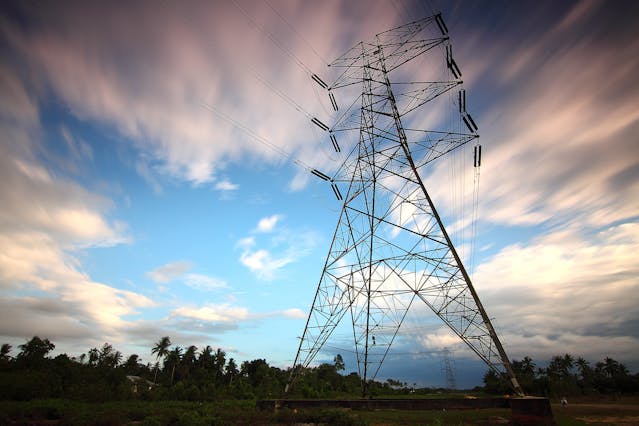The world continues to struggle with a global energy access gap: around 675 million people still live without electricity, and 2.3 billion rely on environmentally hazardous cooking fuels like wood, charcoal, and kerosene. The United Nations has designated access to affordable and clean energy as one of its sustainable development goals, with a target of 2030. However, a 2023 report found that the world is currently not on pace to reach this goal.
Renewable energy offers a sustainable solution to this problem. Communities in developing nations could achieve energy independence by harnessing abundant natural resources like sunlight, wind, and water, but economic constraints, technological limitations, and other factors complicate the transition.
Energy Access Challenges in Developing Nations
Access to modern energy services remains a challenge in many developing nations. This lack of access hinders socioeconomic progress and perpetuates poverty. The following challenges impede energy access and exacerbate disparities in developing countries.
Lack of Access to Modern Energy Services
Millions of people in developing countries lack access to electricity. Instead, they rely on traditional and inefficient energy sources like biomass and kerosene lamps. This energy poverty limits opportunities for economic development and hampers efforts to improve education, healthcare, and overall quality of life.
Geographical constraints, inadequate infrastructure, and financial limitations further compound the issue, especially in rural and remote areas. The absence of reliable energy services marginalizes communities, deprives them of essential resources, and perpetuates socioeconomic inequalities.
Barriers to Conventional Energy Infrastructure Development
Conventional energy infrastructure often fails to reach marginalized communities, leaving them trapped in a cycle of energy poverty. The high costs associated with building and maintaining centralized power grids make it economically unfeasible to extend electricity access to remote areas.
Additionally, geographical challenges like rugged terrain and inaccessible locations pose significant barriers to infrastructure development. Remote communities, especially those situated in mountainous regions or islands, face immense difficulties in accessing modern energy services.
Environmental and Health Implications of Traditional Energy Sources
The widespread use of traditional energy sources like biomass and fossil fuels contributes to environmental degradation and deforestation, which exacerbates the effects of climate change. Indoor air pollution from cooking with solid fuels poses significant health risks.
Addressing the environmental and health implications of traditional energy sources requires comprehensive strategies that promote the adoption of clean and renewable energy alternatives. Sustainable solutions tailored to the specific needs of communities can mitigate these challenges and improve overall quality of life.
The Potential of Renewable Energy Sources
Renewables show promise for addressing the pressing energy needs in developing countries.
Harnessing Solar Energy
Solar photovoltaics (PV) offer a viable solution for electrification in remote areas where grid connectivity is limited. PV systems harness sunlight to generate clean electricity, providing households and businesses with a sustainable energy source. Additionally, solar technology advancements have made PV systems more affordable and efficient.
Tapping Into Wind Power
Wind turbines harness the kinetic energy of wind to produce electricity, offering a reliable and cost-effective energy source. In regions with consistent wind patterns, wind farms have been deployed to generate significant amounts of clean energy. This contributes to local electrification efforts and reduces reliance on fossil fuels.
Exploring Biomass Energy
Biomass energy is derived from organic materials like agricultural byproducts, wood pellets and chips, waste from lumber and paper mills, and even algae. Biomass can be a versatile energy generation solution for rural communities, and it is considered renewable because it comes from plants and simple organisms that take carbon dioxide from the atmosphere and store it in the soil and vegetation. Biomass can be converted into biofuels, biogas, or used directly for heating and cooking. Communities can use locally available biomass resources to reduce their dependence on traditional fuels and mitigate environmental degradation associated with deforestation.
Overcoming Challenges and Promoting Adoption
Renewable energy initiatives in developing countries face various challenges that impede their widespread adoption. However, innovative approaches and strategic interventions can help overcome these barriers and pave the way for greater acceptance and implementation of renewable energy solutions.
Addressing Financial Barriers
One major challenge is the initial cost associated with deploying renewable energy technologies. While renewable energy systems offer long-term cost savings, the upfront investment can be prohibitive for many communities and governments in developing countries. To address this, financial mechanisms such as microfinance loans, grants, and subsidies can provide critical support to make renewable energy projects more economically viable.
Improving Technical Capacity
Another hurdle is the lack of technical expertise and knowledge required for the installation and maintenance of renewable energy systems. Training programs and capacity-building initiatives can play a crucial role in teaching local communities and technicians the skills necessary to design, install, and operate renewable energy infrastructure effectively. By investing in education and skill development, developing countries can build a skilled workforce capable of driving the transition to renewable energy technologies.
Policy Support and Regulatory Frameworks
Policy and regulatory frameworks significantly influence the adoption of renewable energy technologies. Governments can enact supportive policies, such as feed-in tariffs and tax incentives, to create a welcoming environment for renewable energy investment. Additionally, streamlining bureaucratic processes and ensuring clear regulatory guidelines can reduce barriers to entry for renewable energy developers and facilitate project implementation. This can help stimulate private sector investment and accelerate the deployment of renewable energy systems.

